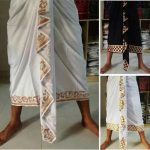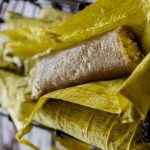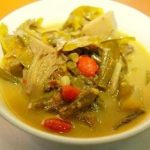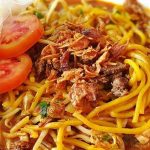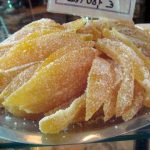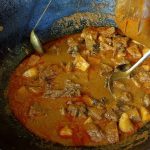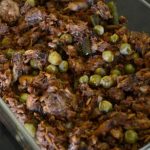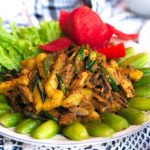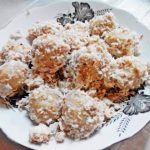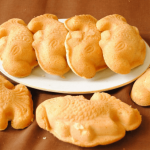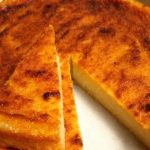Acehnese
Acehnese
The Acehnese (also written as Atjehnese and Achinese) are an indigenous ethnic group from Aceh, Indonesia on the northernmost tip of the island of Sumatra. The area has a history of political struggle against the Dutch colonial rule. The vast majority of the Acehnese people are Muslims. The Acehnese people are also referred to by other names such as Lam Muri, Lambri, Akhir, Achin, Asji, A-tse and Atse. Their language, Acehnese, belongs to the Aceh–Chamic group of Malayo-Polynesian of the Austronesian language family.
The Acehnese were at one time partially Hinduised, as evident from their traditions and the many Sanskrit words in their language. They have been Muslims for several centuries and are generally considered the most conservative Muslim ethnic group in Indonesia with the implementation of Sharia law in their home province of Aceh. The estimated number of Acehnese ranges between 3,526,000 people and at least 4.2 million people.
Traditionally, there have been many Acehnese agriculturists, metal-workers and weavers. Traditionally matrilocal, their social organisation is communal. They live in gampôngs, which combine to form districts known as mukims. The golden era of Acehnese culture began in the 16th century, along with the rise of the Islamic Aceh Sultanate and later reaching its peak in the 17th century. Generally, the Acehnese people are regarded as strict adherents to the Islamic faith and also as militant fighters against the colonial conquest of the Portuguese Empire and the Dutch Empire.
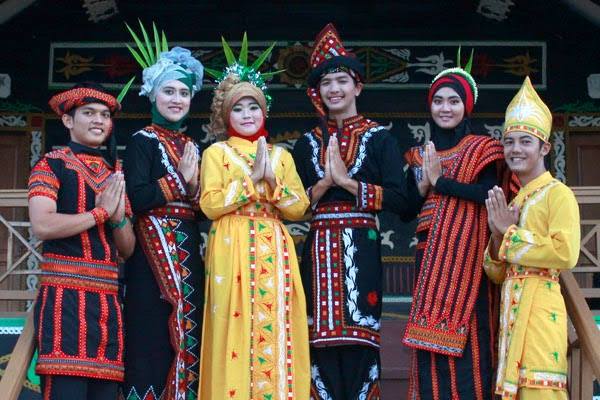 Origins
Archaeological evidence of the earliest inhabitants of Aceh are from the Pleistocene age, where they lived in the west coast of Aceh (Langsa and Aceh Tamiang Regency region) and they exhibited Australomelanesoid characteristics. They mainly lived from seafood, especially various types of shellfish, as well as land animals such as pigs and rhinoceros. They had already used fire and buried bodies with certain rituals.
The migration of the indigenous tribes, the Mantir people and the Lhan people (Proto-Malay), as well as the Chams, Malays and Minangkabau people (Deutero-Malay) who arrived later, formed the pribumi dwellers of Aceh. Foreign ethnicity, especially Indians, as well as a small part of Arabs, Persians, Turks and Portuguese are also components of the Acehese people. The strategic position of Aceh in the northern tip of the Sumatra island for thousands of years has become a haven and inter-marriage of various people group, namely those that are in the sea trade route from the Middle East to China.
Origins
Archaeological evidence of the earliest inhabitants of Aceh are from the Pleistocene age, where they lived in the west coast of Aceh (Langsa and Aceh Tamiang Regency region) and they exhibited Australomelanesoid characteristics. They mainly lived from seafood, especially various types of shellfish, as well as land animals such as pigs and rhinoceros. They had already used fire and buried bodies with certain rituals.
The migration of the indigenous tribes, the Mantir people and the Lhan people (Proto-Malay), as well as the Chams, Malays and Minangkabau people (Deutero-Malay) who arrived later, formed the pribumi dwellers of Aceh. Foreign ethnicity, especially Indians, as well as a small part of Arabs, Persians, Turks and Portuguese are also components of the Acehese people. The strategic position of Aceh in the northern tip of the Sumatra island for thousands of years has become a haven and inter-marriage of various people group, namely those that are in the sea trade route from the Middle East to China.
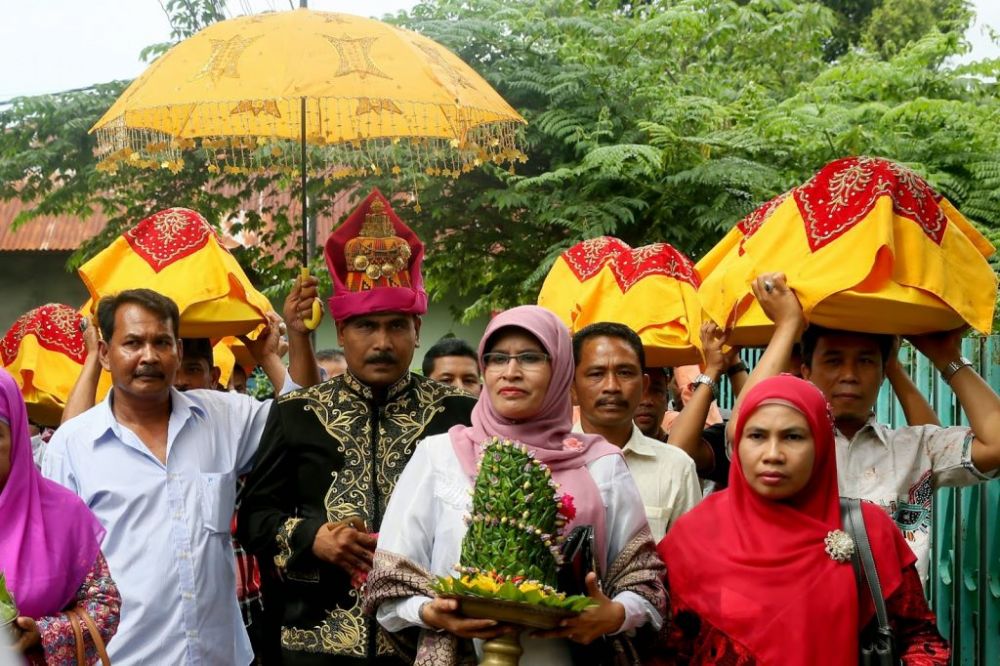 Language
Acehnese language falls under the Aceh–Chamic languages category, a branch of the Malayo-Polynesian languages from the Austronesian languages. Vocabulary of the Acehnese language have been enriched by absorption from Sanskrit and Arabic language, especially in the field of religion, laws, governance, warfare, arts and knowledge. For centuries, the Acehnese language have also absorbed a lot from the Malay language.
Dialects of the Acehnese language that are found in the Aceh Besar Regency valley are divided into two major groups, namely the Tunong dialect for dialects in the highlands and Baroh dialect for dialects in the lowlands. Most of the dialects that are used in Aceh Besar Regency and Daya, shows that settlements in that region have existed longer than any other regions. There are also many dialects in Pidie Regency, although not as much as in Aceh Besar Regency and Daya. Dialects on the east coast of Pidie Regency and in southern Daya tend to be more homogeneous.
Language
Acehnese language falls under the Aceh–Chamic languages category, a branch of the Malayo-Polynesian languages from the Austronesian languages. Vocabulary of the Acehnese language have been enriched by absorption from Sanskrit and Arabic language, especially in the field of religion, laws, governance, warfare, arts and knowledge. For centuries, the Acehnese language have also absorbed a lot from the Malay language.
Dialects of the Acehnese language that are found in the Aceh Besar Regency valley are divided into two major groups, namely the Tunong dialect for dialects in the highlands and Baroh dialect for dialects in the lowlands. Most of the dialects that are used in Aceh Besar Regency and Daya, shows that settlements in that region have existed longer than any other regions. There are also many dialects in Pidie Regency, although not as much as in Aceh Besar Regency and Daya. Dialects on the east coast of Pidie Regency and in southern Daya tend to be more homogeneous.

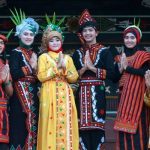
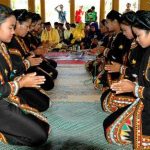
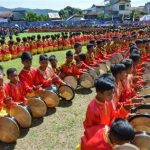
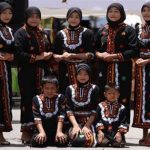
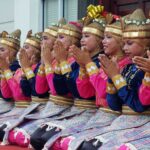
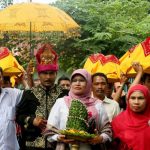
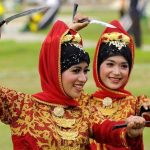
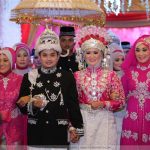
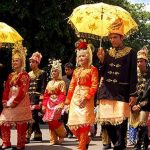
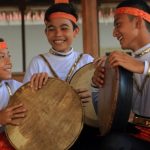
(Million) Population
0
Dialect
0
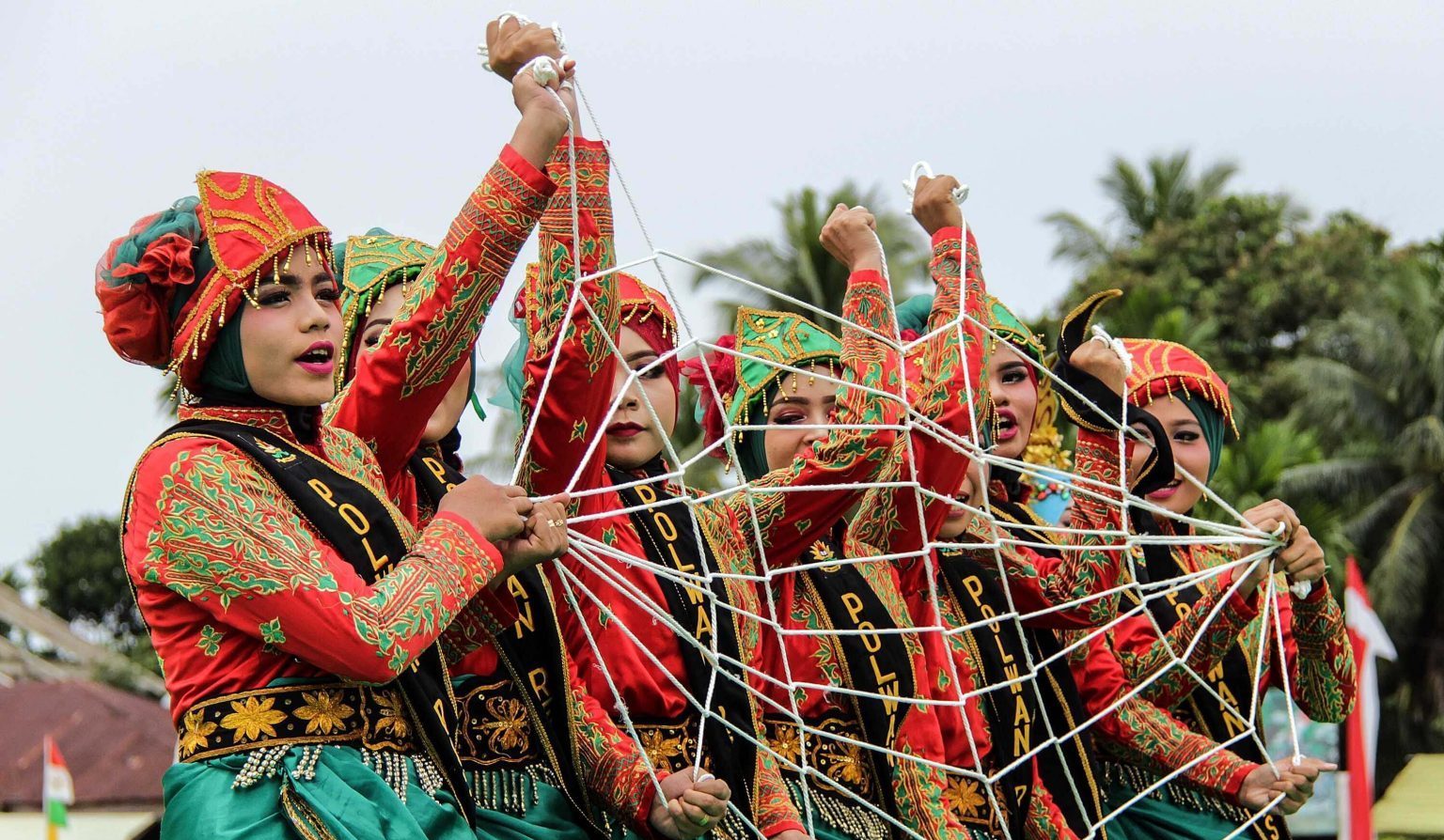 Dances
Traditional Acehnese dance portrays the heritage culture, religion and folklore of the common folk. Acehnese dance are generally performed in groups, either in a standing or sitting position, and the group of dancers are of the same gender. If seen from the musical standpoint, the dance can be grouped into two types.
One is accompanied with vocals and physical percussive movements of the dancers themselves, and the other is simply accompanied by an assemble of musical instruments.
Some of dances of Acehnese are ;
Laweut,
Likok Pulo,
Pho (dance),
Rabbani Wahed,
Ranup lam Puan,
Rapa’i Geleng,
Rateb Meuseukat,
Ratoh Duek,
Seudati,
Tarek Pukat, and
Saman.
Dances
Traditional Acehnese dance portrays the heritage culture, religion and folklore of the common folk. Acehnese dance are generally performed in groups, either in a standing or sitting position, and the group of dancers are of the same gender. If seen from the musical standpoint, the dance can be grouped into two types.
One is accompanied with vocals and physical percussive movements of the dancers themselves, and the other is simply accompanied by an assemble of musical instruments.
Some of dances of Acehnese are ;
Laweut,
Likok Pulo,
Pho (dance),
Rabbani Wahed,
Ranup lam Puan,
Rapa’i Geleng,
Rateb Meuseukat,
Ratoh Duek,
Seudati,
Tarek Pukat, and
Saman. 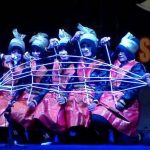
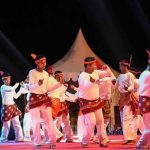
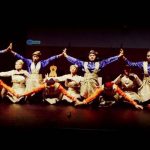
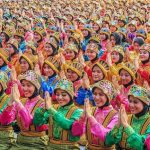
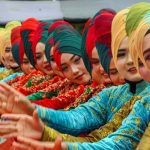
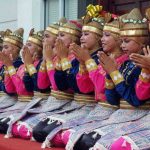
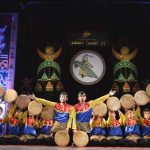
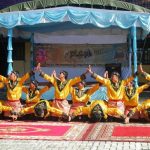
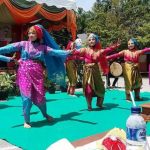

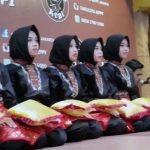

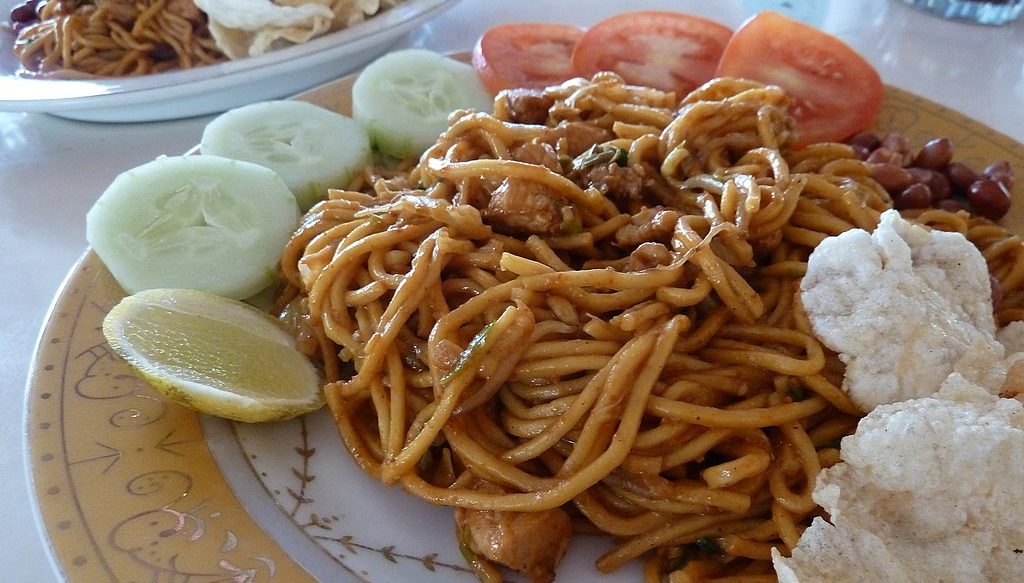 Traditional cuisine
Acehnese cuisine is known for its combination of spices just as are commonly found in Indian and Arabic cuisine, such as ginger, pepper, coriander, cumin, cloves, cinnamon, cardamom and fennel.
A variety of Acehnese food is cooked with curry or curry and coconut milk, which is generally combined with meat such as buffalo, beef, mutton, fish, or chicken.
Here are traditional cuisines of Acehnese :
Ayam tangkap,
Bhoi,
Eungkot paya,
Kuwah eungkôt yèe,
Kuah beulangong,
Kanji rumbi,
Keumamah,
Kuwah pliëk-u,
Martabak aceh,
Masam keueueng,
Meuseukat,
Mie aceh,
Mie caluk,
Nasi gurih,
Roti cane,
Roti jala,
Sambai asam udeueng,
Sate matang,
Sie reuboh,
Sop sumsum, and
Timphan.
Traditional cuisine
Acehnese cuisine is known for its combination of spices just as are commonly found in Indian and Arabic cuisine, such as ginger, pepper, coriander, cumin, cloves, cinnamon, cardamom and fennel.
A variety of Acehnese food is cooked with curry or curry and coconut milk, which is generally combined with meat such as buffalo, beef, mutton, fish, or chicken.
Here are traditional cuisines of Acehnese :
Ayam tangkap,
Bhoi,
Eungkot paya,
Kuwah eungkôt yèe,
Kuah beulangong,
Kanji rumbi,
Keumamah,
Kuwah pliëk-u,
Martabak aceh,
Masam keueueng,
Meuseukat,
Mie aceh,
Mie caluk,
Nasi gurih,
Roti cane,
Roti jala,
Sambai asam udeueng,
Sate matang,
Sie reuboh,
Sop sumsum, and
Timphan. 